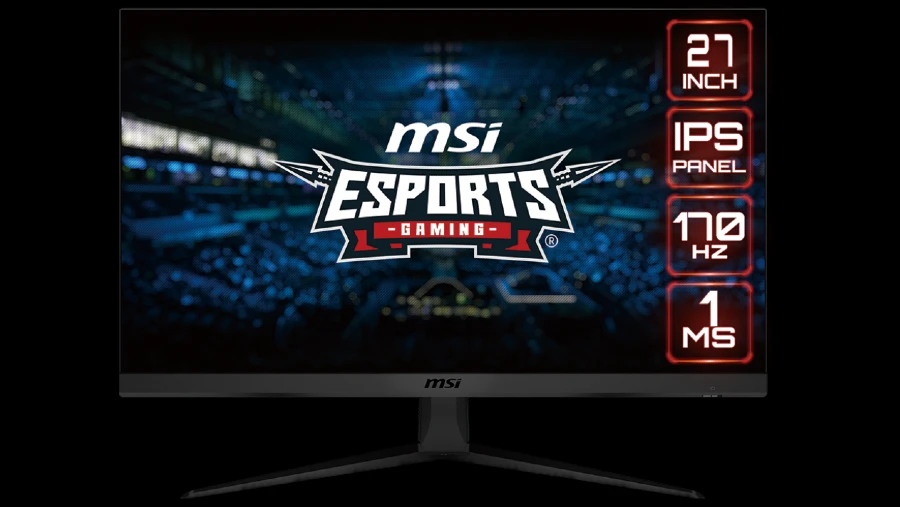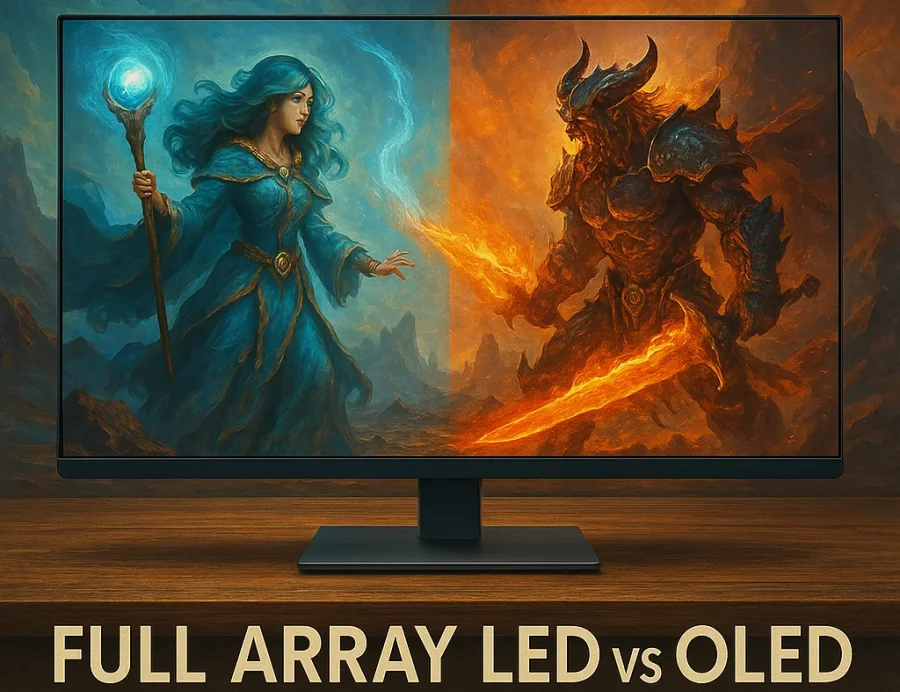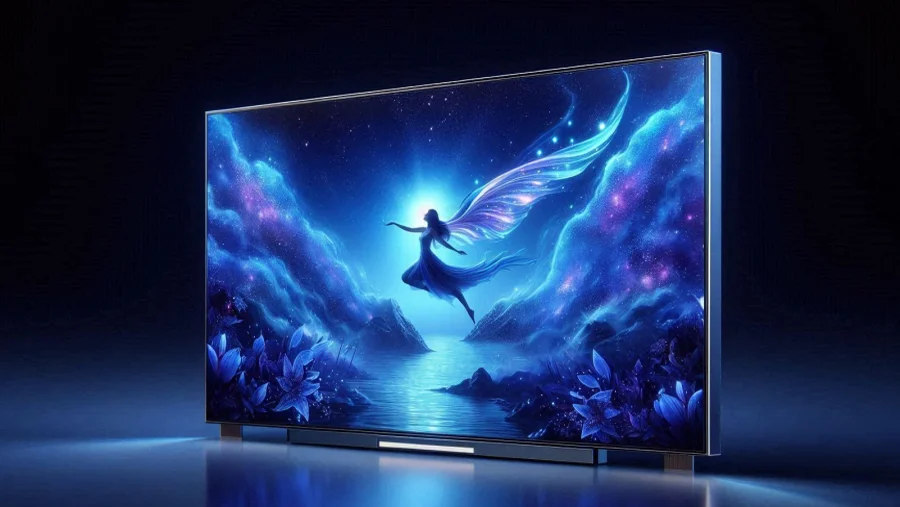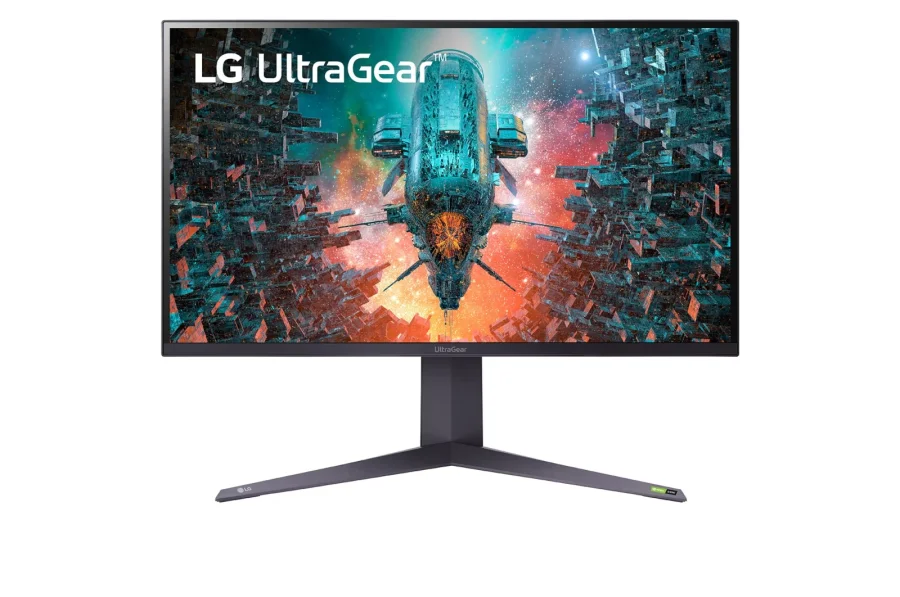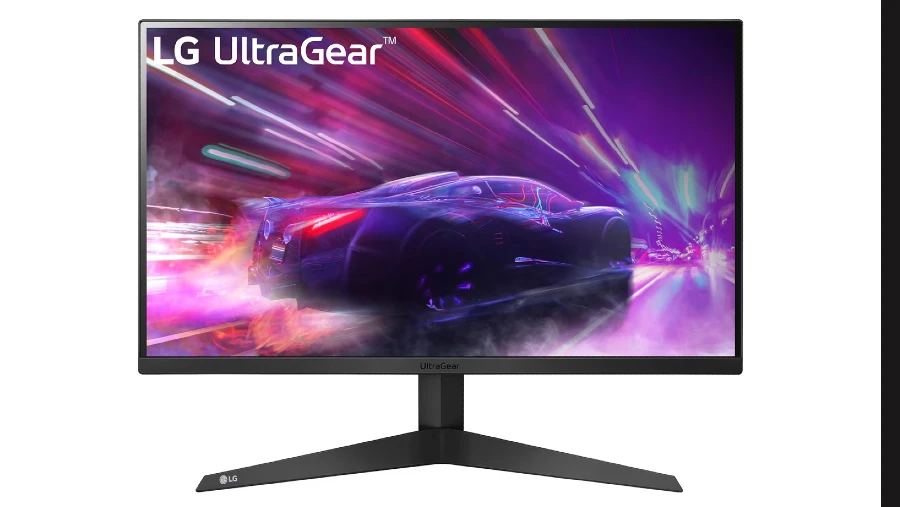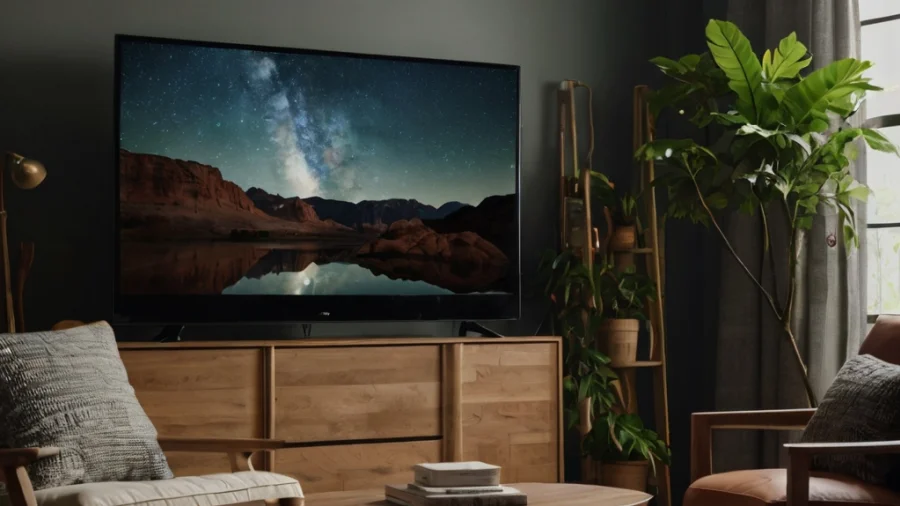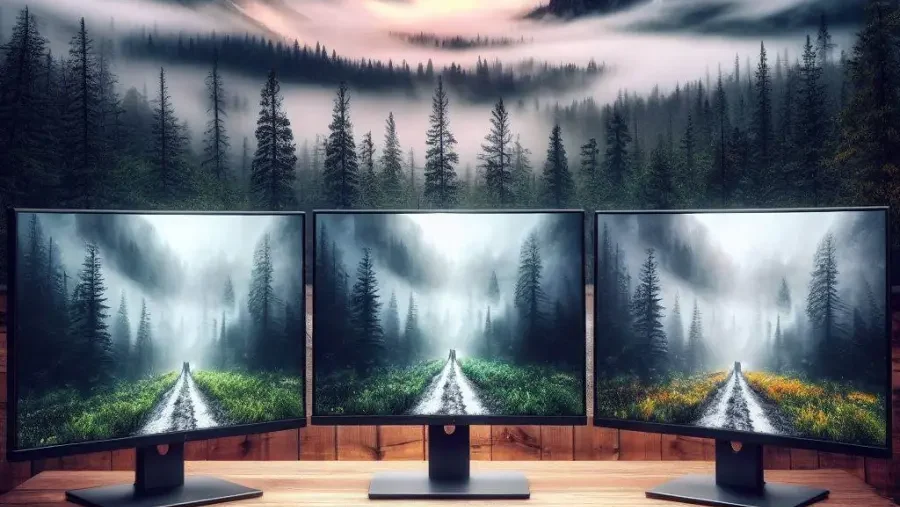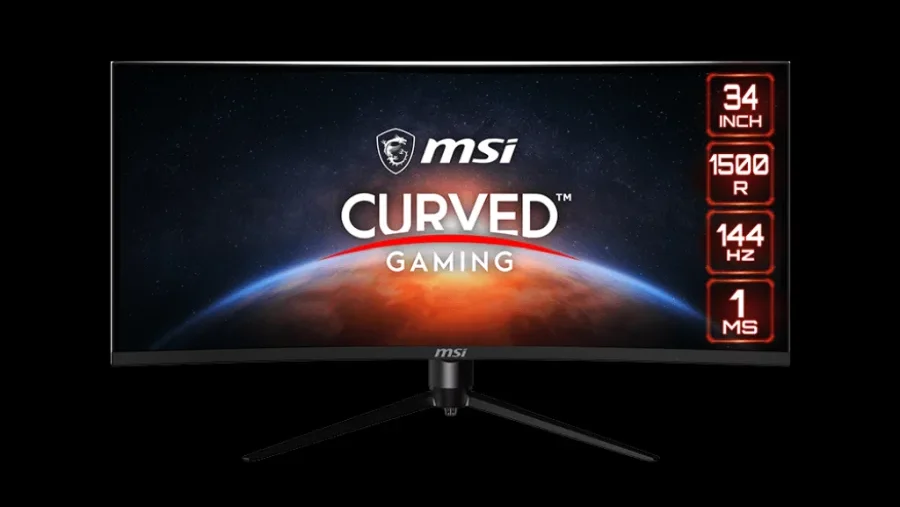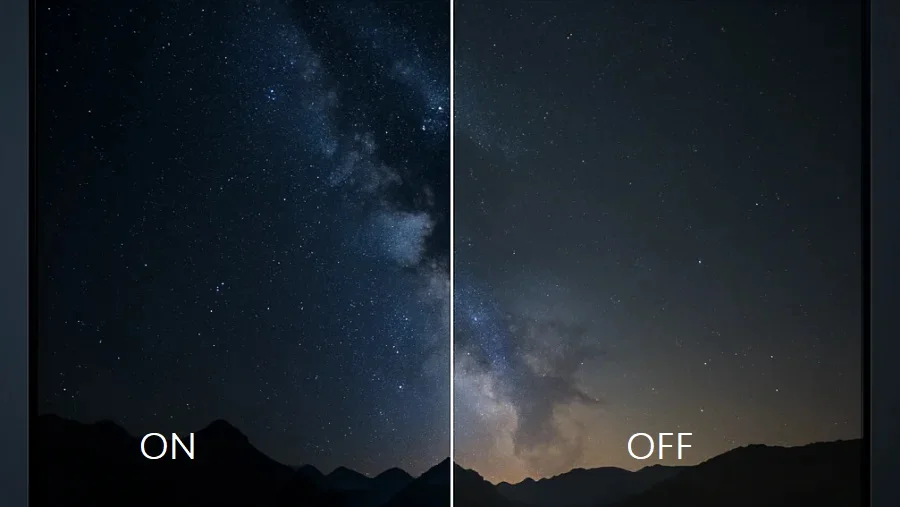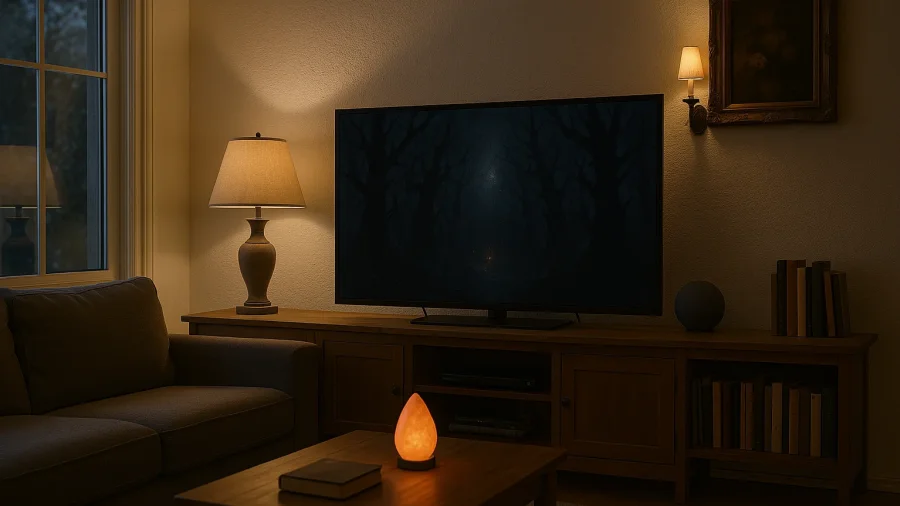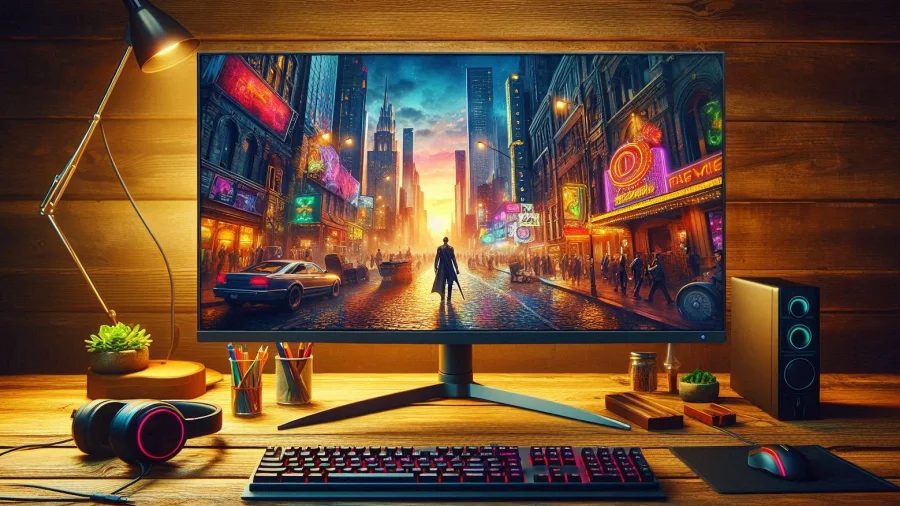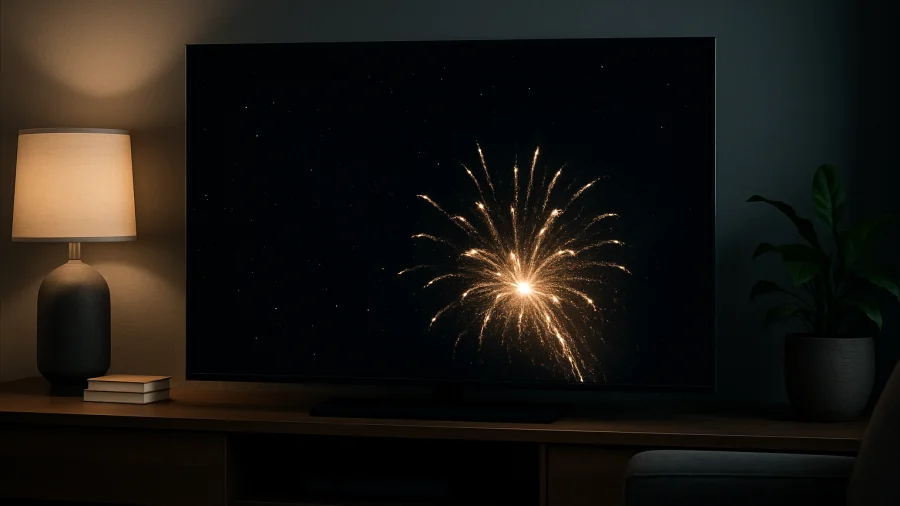
Full Array Local Dimming (FALD) represents one of the more significant advancements in modern display technology, fundamentally transforming how we experience visual content on our screens.
This premium feature has become a key differentiator in high-end televisions and monitors, promising viewers deeper blacks, more vibrant colors, and dramatically improved contrast ratios that bring content to life.
As consumers increasingly demand cinema-quality viewing experiences at home, understanding the impact and implementation of FALD technology has never been more relevant.
This article examines tangible benefits FALD provides to viewers, what to look for when evaluating FALD displays, and how this technology compares to alternative solutions available to consumers.
What is Full Array Local Dimming?
Full Array Local Dimming is a sophisticated backlight technology used in LED-backlit LCD displays.
Unlike edge-lit displays where LEDs are only along the borders, FALD places LEDs directly behind the entire surface of the LCD panel.
These LEDs are grouped into controllable segments called “zones“. The TV’s processor can independently adjust the brightness of each zone.
This means zones corresponding to dark areas of the picture can be dimmed significantly. Simultaneously, zones corresponding to bright areas can be made intensely luminous.
This targeted control allows for much deeper black levels next to bright highlights compared to displays without local dimming or with edge-lit dimming.
As a result, details in both shadows and bright areas are visible simultaneously.
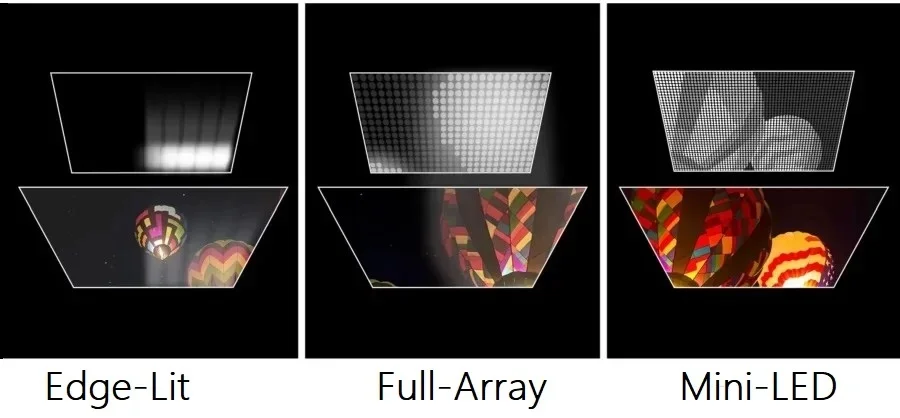
Advantages of Full Array Local Dimming
The primary advantage of FALD is significantly improved contrast ratios. It enables LED TVs and monitors to produce much deeper blacks, closer to what OLED displays can achieve.
Bright highlights can also be pushed further without washing out the entire screen. This leads to a more punchy and lifelike High Dynamic Range (HDR) presentation.
Detail in dark scenes is better preserved. The overall sense of picture depth and dimensionality is enhanced.
Backlight bleed is unwanted light escaping from the backlight unit, this typically occurs around the edges or corners of the screen. It becomes most apparent when viewing dark scenes. Affected areas appear unevenly lit or slightly grey instead of pure black.
Haloing, also known as blooming, is a phenomenon seen with local dimming. It manifests as a faint glow or aura surrounding bright objects on a dark background.
This occurs because the dimming zones illuminating the bright object are larger than the object itself. Light from the brightened zone can spill into adjacent dimmed areas, creating the halo effect.
Compared to edge-lit systems, FALD generally reduces backlight bleed and haloing artifacts, although the effectiveness depends on the zone count and processing.
FALD vs Other Dimming Technologies
| Feature | Full Array Local Dimming (FALD) | Edge-Lit Local Dimming | Mini-LED | OLED | Micro-LED |
|---|---|---|---|---|---|
| Light Source | LED Backlight (Behind Panel) | LED Backlight (Panel Edges) | Smaller LED Backlight (Behind Panel) | Self-Emissive Pixels (Organic) | Self-Emissive Pixels (Inorganic) |
| Dimming Control | Zone-Based | Zone-Based (Fewer/Larger) | Zone-Based (Many More Zones) | Pixel-Level | Pixel-Level |
| Contrast | Very Good to Excellent | Moderate | Excellent to Near-OLED | Infinite (Perfect Blacks) | Infinite (Perfect Blacks) |
| Peak Brightness | High | Good | Very High | Good to High (Lower than LED) | Potentially Extremely High |
| Black Level | Very Deep | Moderate | Extremely Deep | Perfect | Perfect |
| Blooming/Halos | Possible (Depends on Zones) | More Common/Pronounced | Reduced vs FALD, still possible | None | None |
| Burn-in Risk | None | None | None | Yes (Potential) | No |
| TV Thickness | Moderate to Thick | Thinnest (for LED) | Moderate | Thinnest Possible | Varies (Modular Design) |
| Typical Cost | Mid-Range to High-End | Entry-Level to Mid-Range | High-End | High-End | Extremely High (Currently) |
Different approaches exist for managing backlight and contrast:
- Edge-Lit Local Dimming:
- Pros: Allows for thinner TV designs and is typically less expensive to manufacture.
- Cons: Fewer dimming zones (often vertical or horizontal strips) lead to less precise light control. Blooming or halo effects around bright objects on dark backgrounds are more common and pronounced. Overall contrast capability is limited compared to FALD.
- Mini-LED & OLED Alternatives:
- Mini-LED is essentially an evolution of FALD.
- It uses much smaller LEDs for the backlight.
- This allows for significantly more (hundreds or thousands) dimming zones compared to traditional FALD.
- More zones mean finer control, even better contrast, and reduced blooming artifacts.
- OLED (Organic Light Emitting Diode) technology is fundamentally different.
- Each pixel in an OLED display creates its own light and can be turned off completely.
- This results in perfect black levels and theoretically infinite contrast at the pixel level.
- OLEDs generally have lower peak brightness than high-end LED TVs and carry a risk of burn-in with static content.
- Micro-LED Future:
- Micro-LED is seen as a potential successor technology.
- Like OLED, it uses self-emissive pixels (tiny inorganic LEDs).
- It promises the perfect blacks and pixel-level control of OLED.
- It also aims for much higher brightness and longer lifespan without the risk of burn-in associated with OLED.
- Currently, Micro-LED displays are extremely large and prohibitively expensive, limiting them to commercial or ultra-high-end markets for now.
Considerations When Choosing a FALD Display
Not all FALD implementations are created equal. The number of independent dimming zones is a critical factor.
More zones generally allow for more precise light control, deeper blacks, brighter highlights, and less noticeable blooming.
A budget FALD TV might have dozens of zones, while high-end models can feature hundreds or even thousands (especially with Mini-LED).
Performance differences between low-zone-count and high-zone-count FALD TVs can be substantial. High-end FALD displays often couple a high zone count with sophisticated processing algorithms.
These algorithms intelligently manage the dimming transitions to minimize artifacts and maximize contrast.
Panel type also plays a role; VA panels typically offer better native contrast than IPS panels, complementing FALD’s effect, though IPS offers wider viewing angles.
Consider the TV’s overall image processor, as it heavily influences how well the dimming zones are utilized.
Conclusion
Full Array Local Dimming represents a significant technological advancement for LED/LCD televisions and monitors. Its ability to selectively dim zones of the backlight dramatically improves contrast and black levels.
This results in a more dynamic, detailed, and immersive viewing experience, especially with HDR content.
While technologies like OLED offer pixel-level control, and Mini-LED further refines zoned dimming, FALD provides an excellent balance of performance and value.
It remains a highly desirable feature for discerning TV/Monitor buyers seeking superior picture quality from an LED display. The ongoing evolution, including the rise of Mini-LED backlights built upon FALD principles, shows the enduring importance of zoned backlight control.
Future technologies like Micro-LED promise further breakthroughs, continuing the quest for the perfect display picture.
Q&A
Which is better, full array local dimming or direct lit?
Full Array Local Dimming (FALD) is generally considered superior to standard Direct Lit technology for achieving better picture quality. While both systems place LEDs directly behind the screen, the key difference is that only FALD allows for independent dimming of specific zones. Standard Direct Lit backlights either maintain a uniform brightness across all LEDs or dim the entire screen globally, limiting contrast. FALD’s localized control mechanism enables substantially better contrast ratios and more convincing black levels.
What are the disadvantages of full array LED TV?
While offering superior contrast, FALD TVs are not without potential drawbacks. They can sometimes exhibit blooming or haloing effects, which appear as a faint glow around bright objects displayed against very dark backgrounds; the extent of this depends significantly on the number of dimming zones and the sophistication of the TV’s image processing. Additionally, FALD TVs tend to be physically thicker and carry a higher price tag compared to edge-lit models, and their more complex backlight system might result in slightly higher power consumption.
Is FALD the same as Mini-LED?
No, Full Array Local Dimming (FALD) and Mini-LED are related but distinct technologies. Mini-LED represents an advanced evolution built upon the core principles of FALD. It utilizes significantly smaller LEDs for the backlight unit, which enables manufacturers to incorporate vastly more, and therefore much smaller, individual dimming zones compared to traditional FALD systems. Consequently, Mini-LED technology typically offers even finer light control, leading to potentially better contrast and reduced blooming artifacts than standard FALD.
Is local dimming needed for HDR?
While a television can technically process and display an HDR (High Dynamic Range) signal without local dimming, this feature is essential to fully realize the intended impact of HDR content on an LED TV. HDR is fundamentally about achieving a wide dynamic range – the significant difference between the deepest blacks and the brightest highlights. Effective local dimming technologies like FALD or Mini-LED are crucial for enabling an LED TV to produce this expansive contrast range; without them, the visually striking effects of HDR are considerably muted.
Read Next
